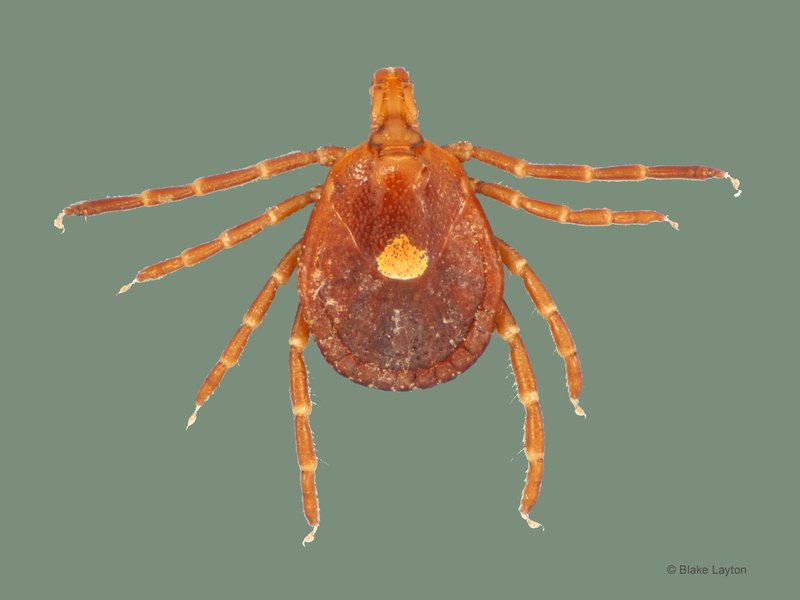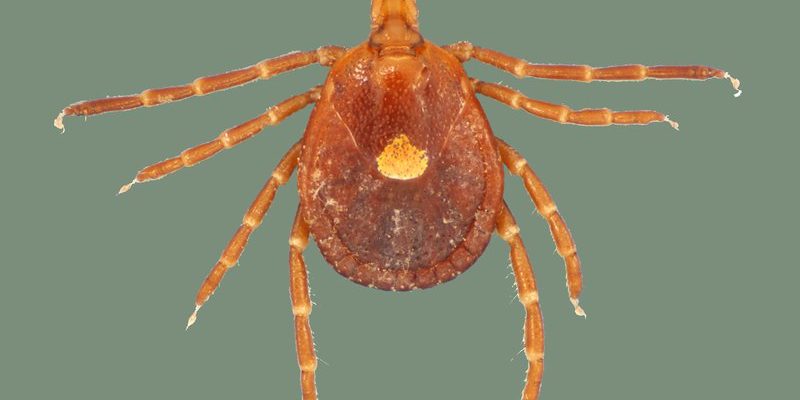
Ticks are small, blood-sucking parasites that belong to the arachnid family—yes, the same family as spiders! You might not think about them until you find one on your pet or yourself, but these little guys play a fascinating role in the food chain and ecosystem. At first glance, ticks might seem like mere nuisances, but there’s more to them than meets the eye.
Imagine a tiny, eight-legged creature, often no bigger than a sesame seed, lurking in tall grass or dense underbrush, waiting to latch onto a passing host. Once attached, they feast on blood, which is crucial for their survival and reproduction. Ticks are prevalent in many parts of the world and come in various species, each with unique behaviors and habitats. The more you learn about ticks, the more you’ll understand why these little creatures deserve a closer look.
Tick Species and Identification
There are over 900 species of ticks, but the most commonly encountered ones are divided into two main families: Ixodidae (hard ticks) and Argasidae (soft ticks). Hard ticks, such as the black-legged tick (often called the deer tick) and the American dog tick, have a hard outer shell and are known for transmitting diseases like Lyme disease and Rocky Mountain spotted fever. On the other hand, soft ticks are often less likely to be noticed, as they can remain on their host for longer periods, sometimes even overnight.
To identify a tick, look for its distinct body shape. Hard ticks typically have a flattened, oval body, while soft ticks are more rounded. The color can range from brown to gray, depending on the species and whether they’ve just fed. Checking for tiny mouthparts is another distinguishing feature; in hard ticks, these are clearly visible, whereas soft ticks have their mouthparts hidden beneath their bodies.
Tick Habitats and Distribution
You might be surprised to learn that ticks can be found almost everywhere, except in extremely cold regions like Antarctica. They thrive in humid environments, often found in forests, grasslands, and even your backyard. Ticks typically prefer areas with dense vegetation, where they can easily latch onto a passing host for a meal.
The distribution of ticks is heavily influenced by climate. For example, warmer and wetter climates tend to have higher tick populations. As global temperatures rise, the habitats of ticks are expanding, increasing the chances that you could encounter them. It’s essential to know where ticks are likely to dwell, especially if you spend a lot of time outdoors. Areas with tall grass, dense shrubs, and leaf litter are prime tick territory.
How Ticks Feed
When a tick finds a host, it uses its specialized mouthparts to anchor itself and begin feeding. The feeding process can last for several days, during which the tick can consume a significant amount of blood relative to its size. Ticks have a unique way of injecting saliva containing anticoagulants, which helps them keep the blood flowing while they dine. This is one reason why you might not notice a tick until it’s well established.
While they feed, ticks can also transmit pathogens, which can lead to diseases in humans and animals. This raises concerns about ticks as carriers of various illnesses, making understanding their feeding process crucial for prevention strategies. After feeding, ticks can become engorged and may swell significantly, making them easier to spot. Recognizing the signs of a tick bite is vital for quick action and treatment.
How to Prevent Tick Bites
Preventing tick bites is essential, especially if you enjoy spending time outdoors. Here are some practical steps to keep ticks at bay:
- Wear Protective Clothing: Long sleeves, long pants, and closed-toe shoes can provide a barrier against ticks. Consider tucking your pants into your socks to minimize skin exposure.
- Use Tick Repellents: Applying insect repellent that contains DEET or permethrin on clothing can help deter ticks from approaching.
- Avoid Tick Habitats: Stick to the center of trails while hiking and avoid walking through dense brush or tall grass when possible.
Being proactive can significantly reduce your chances of a tick bite. Regularly check yourself and your pets after outdoor activities, especially in tick-prone areas. Early detection is key to preventing tick-borne diseases.
Signs and Symptoms of Tick Bites
Recognizing the signs of a tick bite can help you act quickly. Typically, a tick bite may cause mild irritation, redness, or swelling at the site. However, some ticks can transmit diseases that lead to more severe symptoms. For example, Lyme disease often starts with a circular rash that resembles a “bull’s-eye” and is accompanied by flu-like symptoms such as fatigue, fever, and joint pain.
Other tick-borne illnesses may present different symptoms, so it’s essential to monitor any changes in how you feel after a tick bite. If you notice significant swelling, persistent pain, or symptoms that resemble the flu, it’s wise to consult a healthcare provider. Early diagnosis and treatment can make a vast difference in recovery and health.
The Role of Ticks in the Ecosystem
While they may not be the most charming creatures, ticks play a crucial role in the ecosystem. As parasites, they serve as a food source for various animals, including birds, reptiles, and mammals. Their presence in the food chain helps maintain the balance of different species in their habitats.
Moreover, ticks can influence the behavior and health of their hosts. For instance, when mammals are infested with ticks, it can affect their movement patterns and overall health, which may have downstream effects on local ecosystems. Ticks can also contribute to the spread of certain diseases among wildlife, thus impacting population dynamics. Understanding their ecological contributions can help us appreciate why they exist, even if they often bring irritation along with them.
What to Do If You Find a Tick
Finding a tick on your body can be startling, but knowing how to handle the situation can make a big difference. First, try to remain calm. Use fine-tipped tweezers to grasp the tick as close to the skin’s surface as possible, pulling straight out without twisting or jerking. This helps ensure that you remove the entire tick. After removal, clean the bite area thoroughly with soap and water or an antiseptic.
Keep an eye on the site for any signs of infection or unusual symptoms. If you experience a rash or feel unwell after a tick bite, reach out to a healthcare provider for guidance. In many cases, early treatment can prevent the onset of tick-borne diseases. Documenting when and where you were bitten may also be helpful information for your healthcare provider.
Table: Quick Facts About Ticks
| Size: | 1 mm to 1 cm |
| Habitat: | Forests, grasslands, backyards |
| Diet: | Blood from mammals, birds, reptiles |
| Life Cycle: | Egg → Larva → Nymph → Adult |
| Lifespan: | 2 months to 2 years |
Tick-Borne Diseases
Ticks are notorious for being carriers of various diseases, which can pose serious health threats to humans and animals alike. Lyme disease, one of the most well-known illnesses transmitted by ticks, can lead to long-term health issues if not treated promptly. Symptoms may include joint pain, fatigue, and neurological problems. Rocky Mountain spotted fever is another serious disease that tick bites can transmit, causing fever, rash, and sometimes deadly complications.
Other diseases include Anaplasmosis, Babesiosis, and Ehrlichiosis, each leading to a range of symptoms that can vary in severity. Understanding more about these diseases can help you identify symptoms early and seek prompt treatment. It’s also a reminder of the importance of preventive measures when spending time outdoors.
FAQ
Can ticks live in my home?
Ticks prefer outdoor habitats but can occasionally be brought into homes on pets or clothing. They may survive for short periods indoors, especially in humid areas, but they don’t usually reproduce inside homes. Regular cleaning and pet grooming can help reduce the chance of them hitching a ride indoors.
How do I know if a tick is carrying a disease?
It’s difficult to determine if a tick is infected with a disease just by looking at it. The best approach is to remove the tick promptly and monitor yourself for symptoms. If you’re concerned about potential diseases, consult a healthcare provider for testing and advice.
Are all ticks dangerous?
No, not all ticks are dangerous. While many species can transmit diseases, others are harmless and do not pose health risks. However, it’s wise to take precautions against all ticks since even non-disease-carrying ticks can cause irritation and discomfort.
What time of year are ticks most active?
Ticks are most active in spring and summer when temperatures and humidity levels rise. However, some species can remain active during milder winters, especially in warmer climates. It’s essential to remain vigilant year-round if you spend time outdoors in tick-prone areas.
Can I remove a tick with my fingers?
It’s not advisable to remove a tick with your fingers, as this can lead to the risk of infection. Always use fine-tipped tweezers for safe removal, making sure to grasp the tick as close to the skin as possible. This technique minimizes the chance of leaving any mouthparts behind.
Do pets get ticks, too?
Yes, pets can get ticks, and they often bring them into the home. Dogs and cats are susceptible to tick bites, which can lead to tick-borne diseases. It’s essential to regularly check your pets for ticks, especially after outdoor activities, and to use preventive measures such as tick collars or topical treatments.
What happens if I don’t remove a tick?
If a tick remains attached for an extended period, the risk of disease transmission increases. Some diseases can be transmitted within hours, while others may take longer. Leaving a tick attached may also result in localized irritation or infection at the bite site, so it’s crucial to remove it as soon as possible.
How can I make my yard less tick-friendly?
To reduce tick populations in your yard, keep your lawn well-mowed and remove leaf litter, tall grasses, and dense brush. Creating a barrier of wood chips or gravel between your lawn and wooded areas can also help deter ticks. Additionally, consider treating your yard with insecticides labeled for tick control.
Can you get Lyme disease from a tick bite immediately?
Lyme disease typically requires the tick to be attached for around 24 to 48 hours before transmission occurs. This means that removing a tick promptly can significantly decrease your chances of contracting the disease. Always be proactive in tick checks after being in tick-prone areas.
Are there any natural tick repellents?
Yes, there are some natural repellents that may help deter ticks, such as essential oils like lemon eucalyptus, lavender, and tea tree oil. However, their effectiveness can vary, so it’s wise to combine them with other preventive measures when outdoors.
How can I educate others about ticks?
Sharing information about ticks with friends, family, and community members can help raise awareness. Consider hosting an educational session, distributing flyers, or using social media to spread the word about tick prevention and the importance of prompt removal. Knowledge is key to reducing tick-related health risks!

